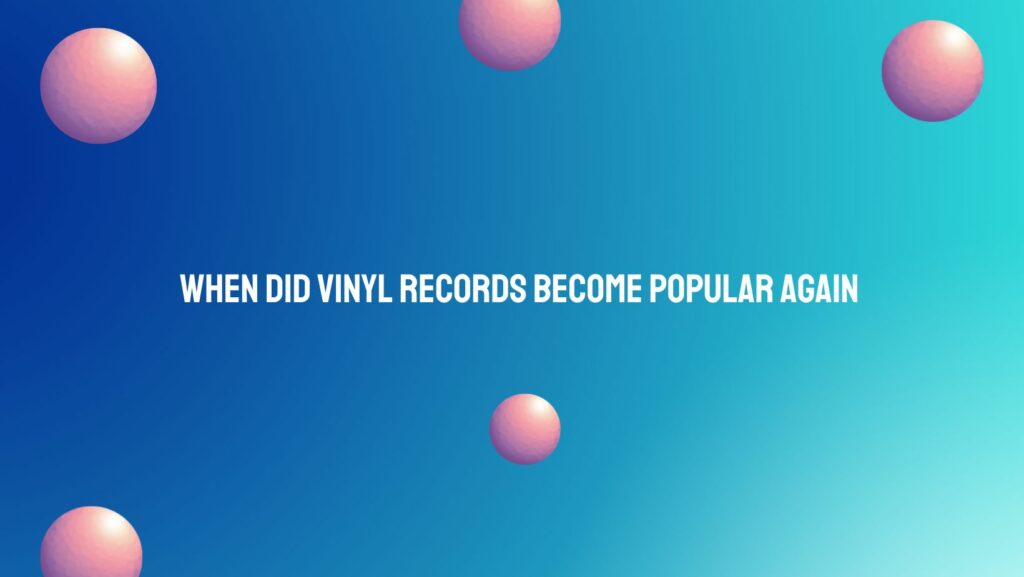In the dynamic landscape of the music industry, where formats come and go, vinyl records have experienced a remarkable renaissance. The journey of vinyl from the brink of obsolescence to cultural resurgence is a captivating narrative that unfolds against the backdrop of changing musical landscapes and evolving consumer preferences. In this exploration, we delve into the timeline of when vinyl records regained their popularity, tracing the key moments and cultural shifts that sparked the vinyl revival.
The Late 20th Century: Decline and Digital Dominance
The late 20th century witnessed the advent of compact discs (CDs) and digital music formats, triggering a decline in the popularity of vinyl records. As consumers embraced the convenience of CDs and later, digital downloads, vinyl records were relegated to the status of nostalgic artifacts, cherished by a devoted but dwindling fan base.
Early 2000s: The Underground Resurgence
Around the early 2000s, a quiet yet significant resurgence began to percolate within niche communities. Independent record stores, vinyl enthusiasts, and underground music scenes played a pivotal role in keeping the vinyl flame alive. Labels started releasing limited vinyl editions, catering to collectors and audiophiles who valued the unique sonic characteristics and tangible experience of vinyl.
Mid-2000s: Mainstream Recognition and Hipster Culture
The mid-2000s marked a turning point as vinyl’s resurgence started to gain mainstream recognition. The rise of hipster culture, characterized by an appreciation for vintage and analog aesthetics, contributed to the growing popularity of vinyl records. Artists and labels began releasing new albums on vinyl alongside digital formats, signaling a shift in the industry’s perception of vinyl as a viable and desirable format.
2010s: The Vinyl Boom
The 2010s witnessed the vinyl boom in full swing. Major artists and record labels embraced vinyl as a premium physical format, releasing special editions, reissues, and exclusive vinyl content. Record Store Day, an annual event celebrating independent record stores, further fueled the vinyl revival by offering exclusive vinyl releases, turning record stores into bustling hubs of activity.
Cultural Shifts: Aesthetic Appeal and Analog Experience
Several cultural shifts contributed to vinyl’s renewed popularity. The resurgence of interest in analog aesthetics, the desire for a tangible connection to music, and the appreciation for vinyl’s warm, analog sound all played integral roles. Vinyl became more than a format; it became a statement, a symbol of intentional listening and a rejection of the disposable nature of digital music.
Late 2010s to Present: Sustained Enthusiasm
As we move into the late 2010s and beyond, vinyl’s popularity shows no signs of waning. The format has firmly established itself as a significant player in the music industry, with vinyl sales consistently growing year after year. From mainstream releases to underground gems, vinyl continues to capture the hearts of music enthusiasts of all ages.
Conclusion: A Harmonious Future
The resurgence of vinyl records, once seen as a nostalgic nod to the past, has become a harmonious intersection of tradition and modernity. The vinyl revival is not merely a trend; it’s a cultural movement that celebrates the enduring appeal of analog sound and the tangible experience of music. As vinyl records continue to spin on turntables around the world, the symphony of crackling grooves and warm melodies echoes a timeless appreciation for the artistry of music. The vinyl revival, born out of a blend of nostalgia, cultural shifts, and a collective yearning for authenticity, stands as a testament to the enduring magic of analog sound in the digital age.


